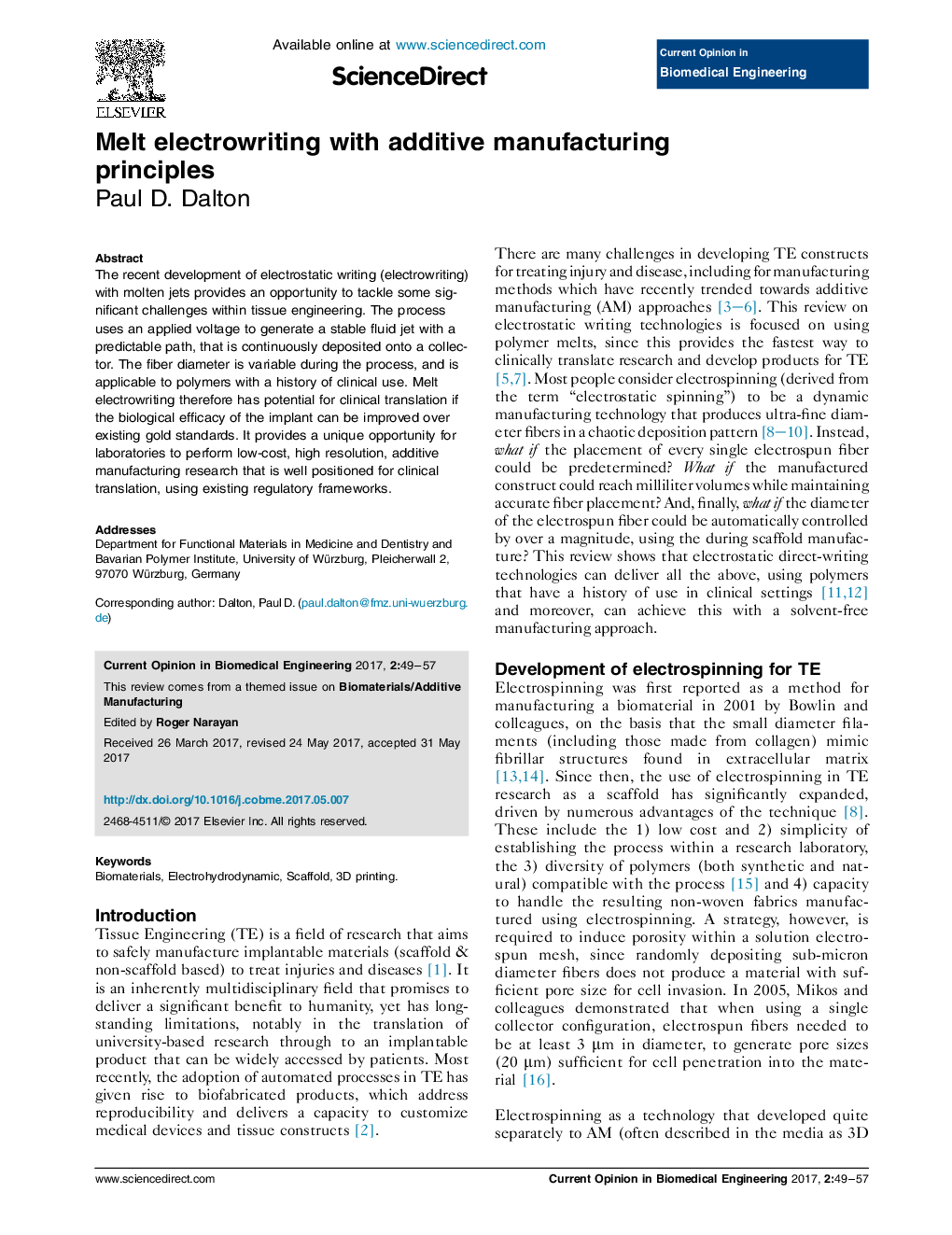| Article ID | Journal | Published Year | Pages | File Type |
|---|---|---|---|---|
| 8919037 | Current Opinion in Biomedical Engineering | 2017 | 9 Pages |
Abstract
The recent development of electrostatic writing (electrowriting) with molten jets provides an opportunity to tackle some significant challenges within tissue engineering. The process uses an applied voltage to generate a stable fluid jet with a predictable path, that is continuously deposited onto a collector. The fiber diameter is variable during the process, and is applicable to polymers with a history of clinical use. Melt electrowriting therefore has potential for clinical translation if the biological efficacy of the implant can be improved over existing gold standards. It provides a unique opportunity for laboratories to perform low-cost, high resolution, additive manufacturing research that is well positioned for clinical translation, using existing regulatory frameworks.
Related Topics
Physical Sciences and Engineering
Engineering
Biomedical Engineering
Authors
Paul D. Dalton,
